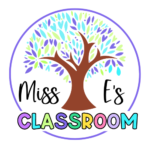
Children are always fascinated by Halloween because it combines excitement and fear in a safe and controlled environment. I don’t know about you teachers, but in my 20 years teaching, every year my students of different ages get over excited and eager with this topic, so much that they can’t get over the fact that it ends on October the 31st. When I try to start November with another topic, they hate it and want me to return to Halloween songs and games. Throughout the years, I have come to the conclusion that it might be because of:
- The excitement of the Unknown: Halloween involves elements of mystery and the unknown. Children are naturally curious, and Halloween allows them to experience a sense of adventure and excitement by exploring spooky themes, costumes, and decorations.
- The thrill and Adrenaline Rush: The fear factor associated with Halloween, such as haunted houses, spooky stories, and eerie decorations, provides a thrilling and adrenaline-pumping experience. This excitement is something children enjoy, much like a roller coaster ride.
- The Safe Fearful Experience: Halloween allows children to confront their fears in a controlled and safe environment. The fear they experience is typically not harmful but rather exhilarating, providing a sense of accomplishment when they overcome their fear.
- The Social Influence: Seeing their friends excited about Halloween and participating in the festivities influences a child’s perception and excitement. Also, stores and restaurants get halloweeney too, so they want to be part of that.
- The imagination and creativity: Halloween encourages children to use their imagination and creativity in choosing costumes, decorating, and storytelling. They enjoy the imaginative aspect of dressing up as someone or something else for a night.
- The candy and treats: The prospect of receiving a variety of candies and treats during trick-or-treating adds to the excitement of Halloween. The anticipation of rewards motivates children to overcome their fears.

The dual nature of Halloween, blending fear and excitement, contributes to its popularity among children. It allows them to experience a controlled level of fear while enjoying the imaginative and social aspects of the holiday. It’s the thrill of being a little scared in a safe and playful context that makes Halloween so appealing to many kids.
To leverage this excitement to our advantage, these strategies might help you a lot:
- Introduce Halloween-related vocabulary like «ghost,» «witch,» «pumpkin,» etc. Use these words in various language activities like word games, story creation, or role-playing. Design language games with a Halloween twist. For example, a Halloween-themed bingo using Halloween-related vocabulary or a Halloween spelling bee. Create worksheets or exercises that use Halloween themes, incorporating grammar or vocabulary lessons related to the holiday.
- Find Halloween-themed reading materials, such as short stories or poems, then facilitate discussions or comprehension activities based on the story. Encourage students to express their thoughts and opinions in English. Encourage them to create their own spooky stories, which can enhance their language skills and creativity.


3. Incorporate arts and crafts related to Halloween, such as making masks, creating spooky decorations, or designing part of their own costumes. This not only engages them creatively but also reinforces vocabulary related to Halloween.
4. Organize role-playing activities where students can act out Halloween-related scenarios, like trick-or-treating or attending a Halloween party. This can improve their speaking and listening skills in a fun and interactive way. Organize a Halloween celebration in the classroom the closest to Oct 31st, allowing students to come dressed in costumes and engage in language activities related to the holiday, gymkhanas, outdoor games, scavenger hunts, escape rooms, etc.


